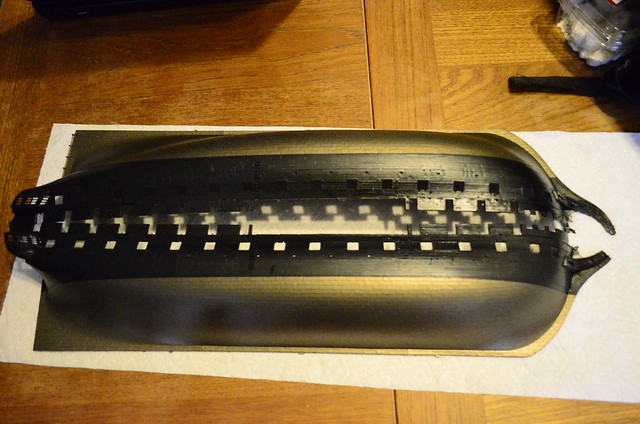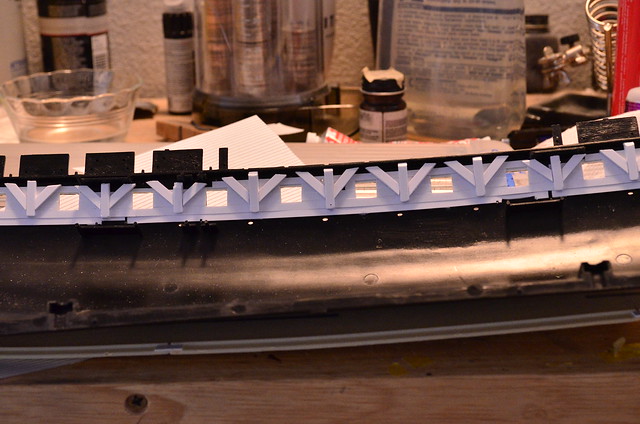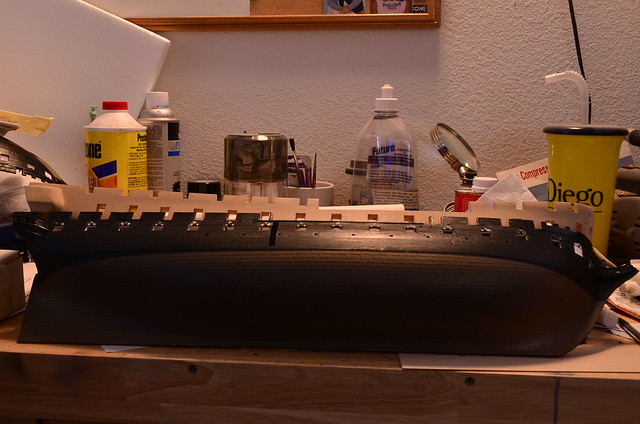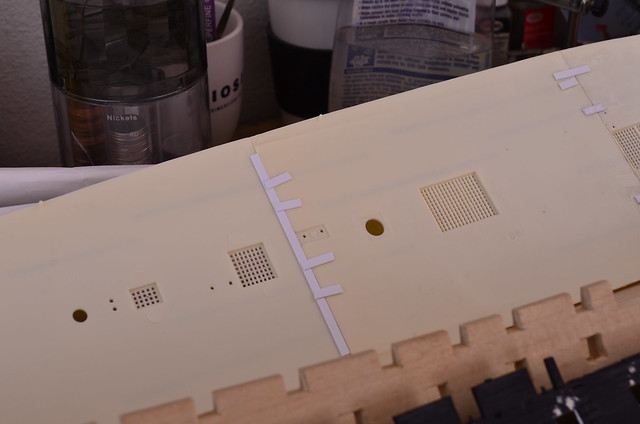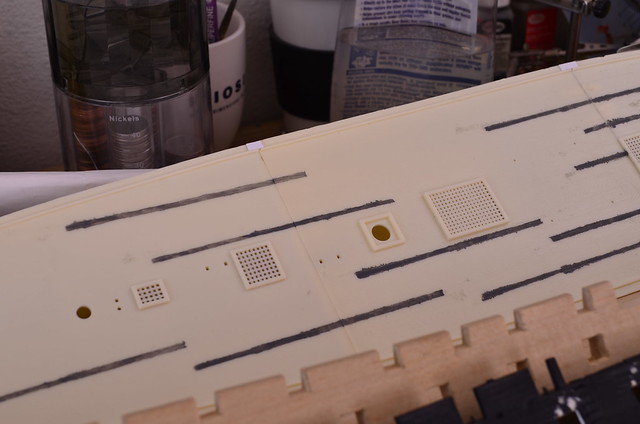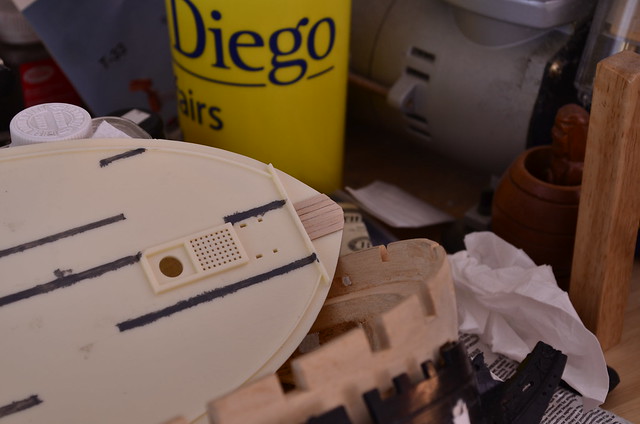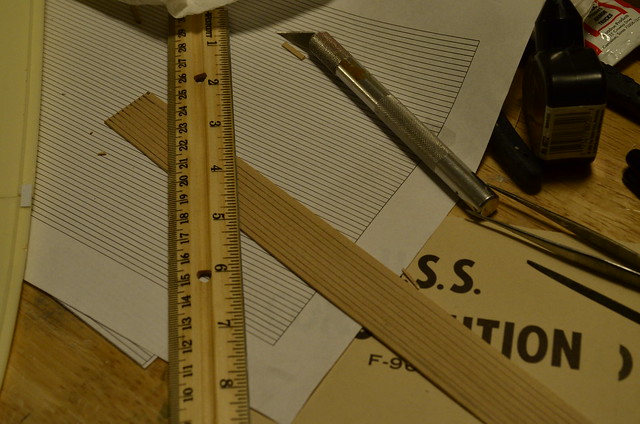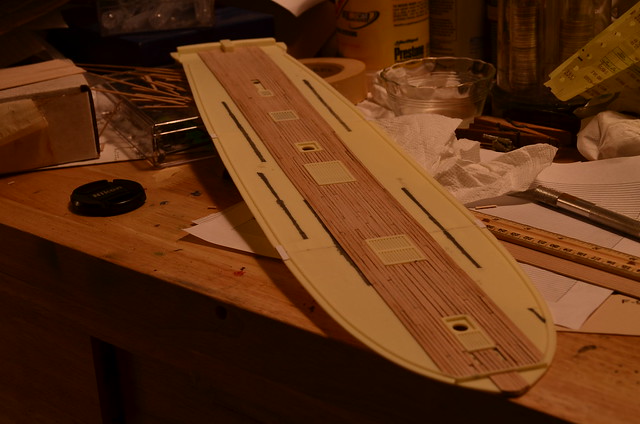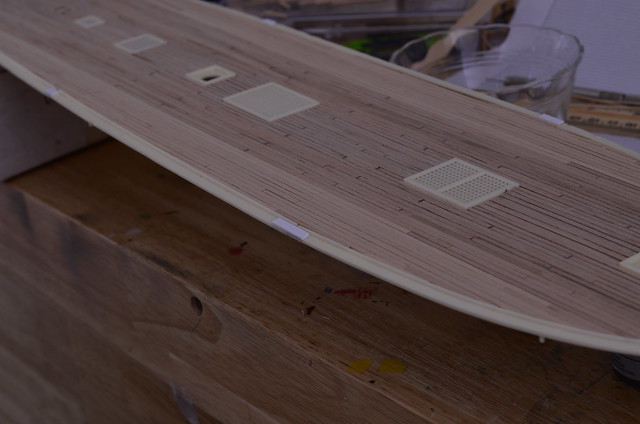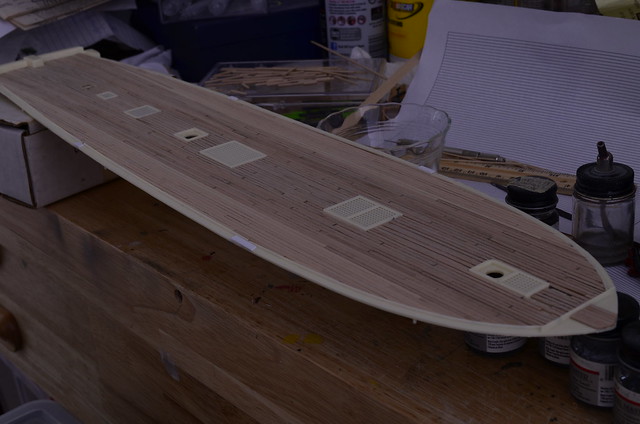Hello all,
I am Jose Gonzales, a part time participant in this forum a while back, but relegated to the role of lurker (for those offended by lurkers, please accept my apologies) for the last few years by children, health issues, and life in general.
I begin this log with a dilemma. Many years ago, I was lucky enough to score big on e-bay with a BlueJacket Constitution kit for $55. I wondered at the time if the seller knew what he had in his hands - new, the kit was selling for 10 times that amount. I counted my lucky stars and added the kit to the stash without examining it closely
Fast forward to a few years ago. My neighbor was having a garage sale, and was getting rid of a revell 1/96 Constitution, a Museum Classics version with “cloth-like sails” and a wooden panel with brass-coated plastic stands. I bought that for $25, with the thought in mind of mashing it with the metal parts from the BlueJacket kit - I did not have woodworking tools or skills, and if I wanted to copper plate the Bluejacket kit, I would have to buy 3000 individual copper plates, so I figured the mash-up might be a way to make a great model without having to carve any wood. The kit was placed in the stash and sat for a few years.
Fast forward to April 10, 2016. I had just sold my Constitution version 2 (which took 10 years to build) to clear space for my next build - the Heller HMS Victory 1:100. I had purchased Dafi’s absolutely beautiful photoetch set for the Victory (amazing set, well worth the money), but was a little intimidated by the scale and scope of the project. As i dug out my Victory from the stash, I caught sight of the Bluejacket kit, and dragged it out for an inspection. The original purchaser had started on the solid hull, and had made some glaring mistakes, which might explain whay they were willing to part with it. This was the bicentennial version, so it is solid to the gun deck, and upwards, includes the whole hull up to the spar deck bulwarks. The builder has only to cut the gun ports and build up the beams and planking for the spar deck. The owner had cut the gun ports perpendicular to the hull. This means that in the areas of high tumble-home, the gun ports were cut at a downward angle. With thickness of the bulwarks, the ports in the middle of the ship probably had ended up at the deck level. The owner tried to accomodate this by lowering the gun deck, but he apparently assembled one of the guns, set it on the deck to see how it looked, and found that the barrel would not reach out of the hull because of the angle of the gunports.
I had seen the wonderful work of Arnie and Evan, among many others, and found my self inspired to give Old Ironsides one more try. The question - should I contact BlueJacket and order another hull, or go with my original plan to mash up the parts of the two kits? Given that I still did not have woodworking tools or the skills required for such a complex model, I chose the latter.
A close inspection of th kit revealed that even without the hull, this kit is an amazing treasure trove of parts. Check out this parts list: http://www.bluejacketinc.com/kits/partsLists/constitution.pdf
I checked the contents, and it appears all of it is there, with the exception of a small amount of decking that the previous owner had applied to a small section of the gun deck. Beautiful pieces, which I will be happy to put to good use.
Unfortunately, the Revell Constitution I had purchased had a few issues:
-
The “cloth-like sails” were crushed beyond repair - good riddance.
-
On one of the hull halves, the billet-head had broken off. The piece was still in the box, and it looked like a clean break, which would be hardly noticeable when glued back on.
-
On the other hull half, the knighthead had broken off. Unfortunately, while inspecting the box, I had actually found the piece, but thinking it was a piece of scrap plastic, I threw it away on, of all days, trash day! Gone forever.
Everything else in the kit was intact and complete. I turned to my trusty friend, Constitution version 1, which I had built when I was 16, and had scavenged for parts to enhance my Constitution 2 build. One last sacrifice - I sawed off the knighthead with a no. 11 blade, and put the piece in the spares box for later application.
Now, off to the build![:D]
